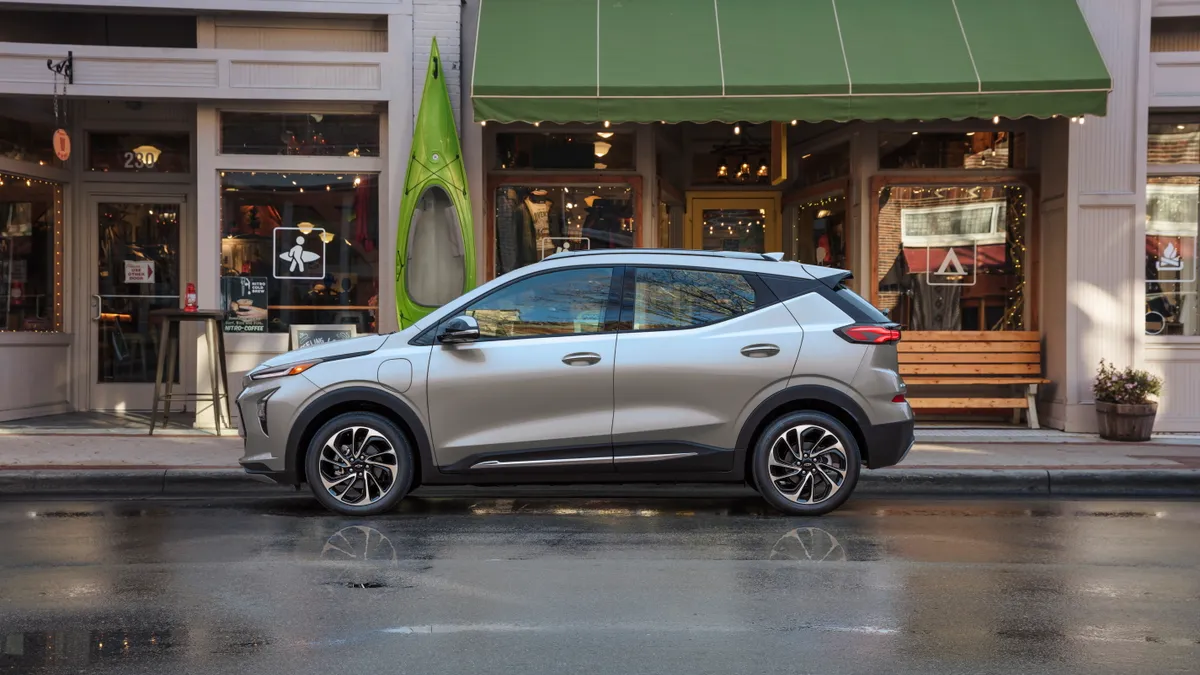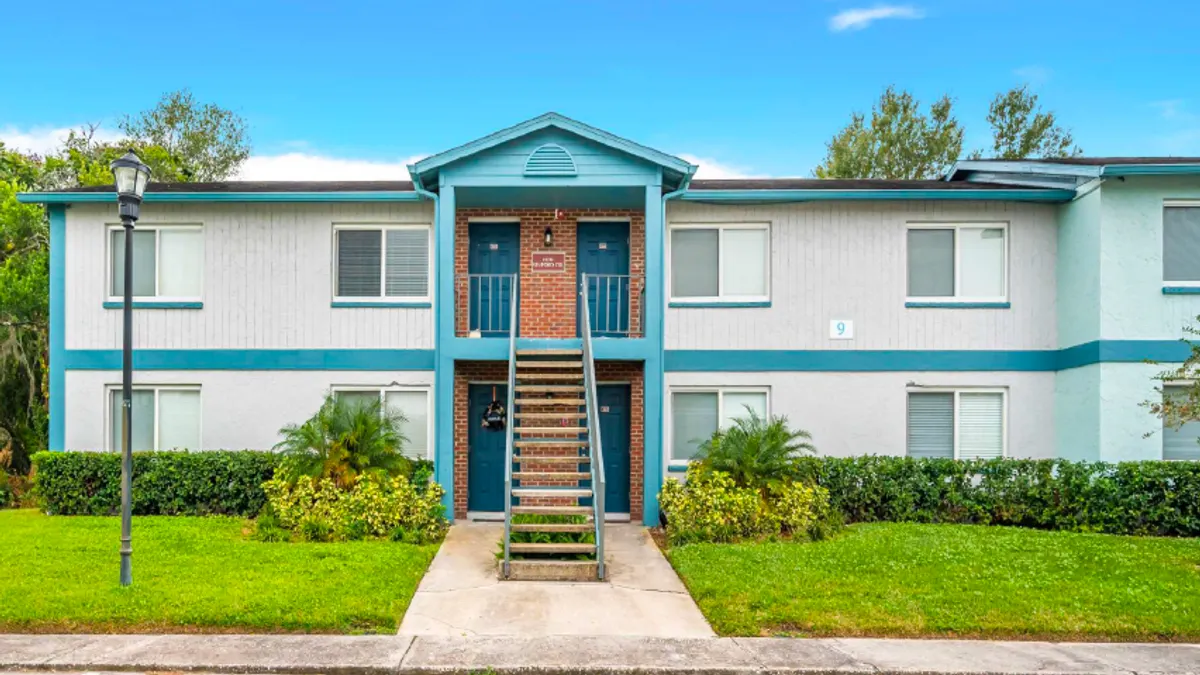As electric vehicle sales in the U.S. continue to grow, one stat that stands out is that EV owners charge their vehicles at home or work 70% to 80% of the time. But for those living in multifamily dwellings, including apartments and condominiums, access to charging stations may be scarce.

Candace Chu O’Melia joined General Motors one year ago as an electric vehicle charging analyst working on solving that problem. Prior to GM, O’Melia worked at GRID Alternatives leading transportation equity work for clean mobility initiatives and worked with ChargerHelp! as a consultant to develop workforce development solutions to EV charger reliability.
Smart Cities Dive spoke with her to learn more about GM’s efforts to ensure a more equitable approach to building out the EV charging infrastructure.
The following interview has been edited for length and clarity.
SMART CITIES DIVE: What is your role at General Motors?
CANDACE CHU O’MELIA: I am leading a strategy for how we tackle the multifamily EV charging problem. No one has truly developed a really good solution yet for renters, for people who live in apartments, townhomes and condos. So I got brought on to GM to help solve this problem.
What is your approach to tackling this issue?
I'm looking at it from a policy perspective. It's two to eight times cheaper to install this [charging] infrastructure at new construction versus retrofitting. So how can we influence building codes? What can GM do on that front?
But I’m also thinking about how can we get more people experiencing what it's like to drive electric [vehicles] and understanding how to live with an EV and integrate it into [their] lifestyle.
It's not gonna happen overnight and there's no one-stop-shop solution, but we need to be doing something and we need to be able to offer something to GM customers who live in apartments.
How important is public charging infrastructure for those not living in single-family homes?
Public charging is a critical area that GM is trying to address as well. We believe that EV charging should be open and ubiquitous. So we are working with all the different states through the [National Electric Vehicle Infrastructure] funding [program], trying to help them understand which corridor should be prioritized. We're trying to build out public charging in other areas as well. We are working with many other public and private partners to make sure that we can have greater access to public charging.
How are GM dealers involved in charging solutions?
Our dealerships are able to participate in the [GM] Dealer Community Charging Program. Essentially, they're getting 10 Level 2 chargers and they can place them anywhere in their community – not at dealerships – so the community can determine where [they] want to put these charging stations.
We want the dealers to be able to support their communities. So if there's EV infrastructure and people are seeing EVs and seeing EVs charging, we think that's a really great first step.
How does smart cities technology fit into what GM is doing in this area?
We can't manage what we can't measure, so understanding how EVs are being charged and discharged [is important] right now. Thinking towards the future, how can we integrate this entire ecosystem where we have smart appliances that can talk to our EVs so that EVs can become virtual power plants? In the longer term, that's what I see. Cities can be involved in helping to ensure that we do not overload the grid, working with utilities and other public agencies and stakeholders on that front.
What do you hope to accomplish at GM?
Multifamily EV charging is the nut I want to crack. I want to make sure that we have some solutions or we're testing things out and we're learning from that because I know it'll be an iterative approach. There is no one-size-fits-all solution because everyone lives in a different form of housing, especially within multifamily.










